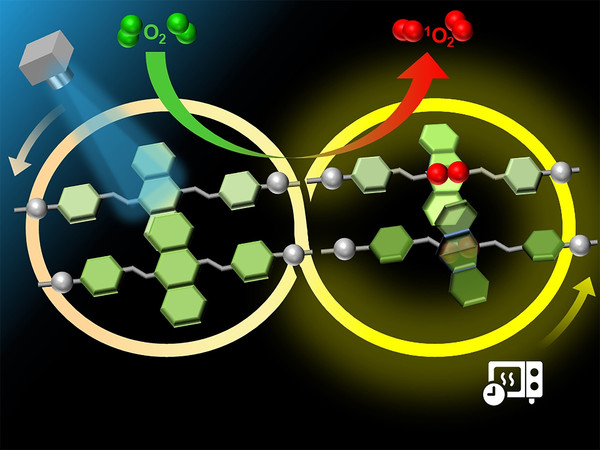Visible Light and Microwave-Mediated Rapid Trapping and Release of Singlet Oxygen Using a Coordination Polymer
Li Qiu-Yi1,2, Deng Yun-Hu1, Cao Chen1, Hong Yu-Xuan1, Xue Xin-Ran1, Zhang Min-Jie1, Ge Yu1*(葛宇), Abrahams Brendan F.3, Lang Jian-Ping1,2*(郎建平)
1 College of Chemistry, Chemical Engineering and Materials Science, Soochow University,Suzhou 215123, Jiangsu (P. R. China)
2 State Key Laboratory of Organometallic Chemistry, Shanghai Institute of Organic Chemistry, Chinese Academy of Sciences, Shanghai 200032 (P. R. China)
3 School of Chemistry, University of Melbourne, Melbourne, Victoria 3010 (Australia)
Angew. Chem. Int. Ed. 2023, e202306719
Abstract:Due to its high reactivity and oxidative strength, singlet oxygen (1O2) is used in a variety of fields including organic synthesis, biomedicine, photodynamic therapy and materials science. Despite its importance, the controlled trapping and release of 1O2 is extremely challenging. Herein, we describe a one-dimensional coordination polymer, CP1, which upon irradiation with visible light, transforms 3O2 (triplet oxygen) to 1O2. CP1 consists of CdII centers bridged by 9,10-bis((E)-2-(pyridin-4-yl)vinyl)anthracene ligands which undergo a [4+2] cycloaddition reaction with 1O2, resulting in the generation of CP1-1O2. Using microwave irradiation, CP1-1O2 displays efficient release of 1O2, over a period of 30 s. In addition, CP1 exhibits enhanced fluorescence and has an oxygen detection limit of 97.4 ppm. Theoretical calculations reveal that the fluorescence behaviour is dominated by unique through-space conjugation. In addition to describing a highly efficient approach for the trapping and controlled release of 1O2, using coordination polymers, this work also provides encouragement for the development of efficient fluorescent oxygen sensors.

链接://onlinelibrary.wiley.com/doi/epdf/10.1002/anie.202306719